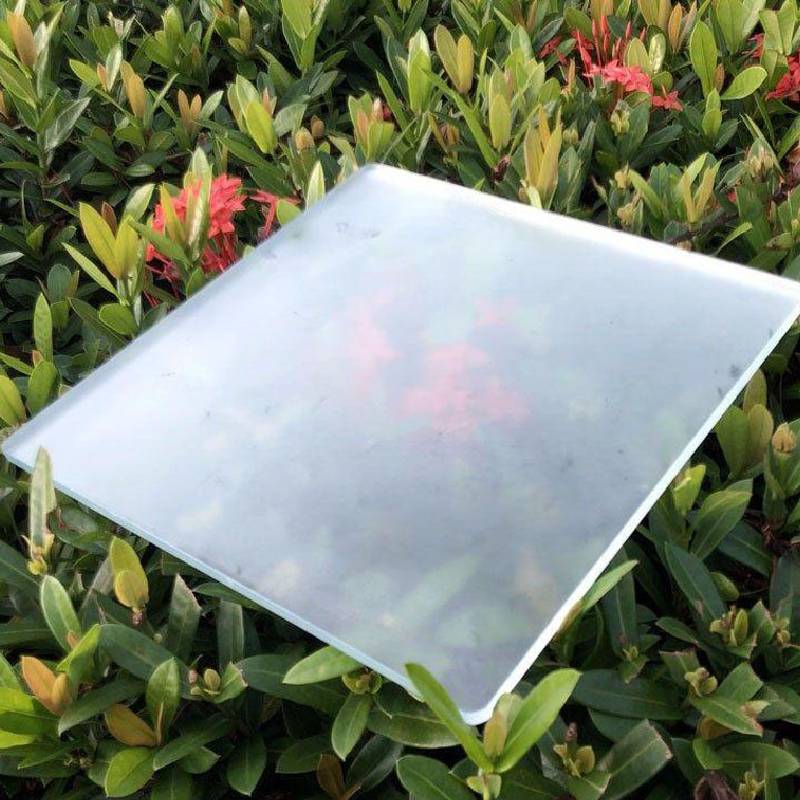Float glass is one of the most commonly used types of glass in construction and various applications today. It is created by floating molten glass on top of molten tin, which allows for a smooth and even surface. This unique production method gives float glass its name and ensures that it has superior optical clarity and uniform thickness. In this article, we will explore the various types of float glass, their characteristics, and applications.
One of the primary types of float glass is clear float glass, which is transparent and has no tint. This type of glass is widely used for windows, glass doors, and mirrors due to its excellent clarity. Its high light transmission makes it ideal for applications where visibility is crucial. Clear float glass can also be easily coated or treated to enhance its properties further, such as improving energy efficiency or providing additional UV protection.
Another prominent type is low-iron float glass. This variety contains a reduced amount of iron oxide, resulting in a glass that is nearly colorless. Low-iron float glass offers higher clarity and is often employed in high-end applications, such as luxury storefronts and display cases. Its ability to transmit more light makes it an excellent choice for environments where transparency is paramount, such as in museums and exhibitions.
Moreover, we have tinted float glass, which has been treated with various metal oxides to introduce color and reduce glare. Tinted glass can significantly decrease the amount of solar energy entering a building, making it an excellent choice for energy efficiency. It is commonly used in commercial buildings, where enhancing comfort and reducing cooling costs are essential. Available in various shades, tinted float glass can also be used for aesthetic purposes, providing a stylish look to any structure.
types of float glass
Another classification includes reflective float glass, which has a thin metallic coating on one side to increase its reflectivity. This type of glass is often used in commercial buildings and skyscrapers to reduce heat gain while maintaining a degree of visibility from the inside. The reflective surface also contributes to energy efficiency by minimizing the need for artificial lighting during the day.
Laminated float glass represents another type that is constructed by sandwiching a layer of polyvinyl butyral (PVB) between two sheets of float glass. This process not only enhances the glass's strength but also provides additional safety, as the PVB layer holds the glass together in case of breakage. Laminated glass is commonly used in car windshields, glass facades, and areas requiring enhanced security.
In addition to these types, the versatility of float glass allows for various treatments and coatings, including those for UV filtering, anti-reflective properties, and self-cleaning mechanisms. Each treatment improves the glass's functionality and suitability for specific environments.
In conclusion, the different types of float glass serve various purposes across multiple industries. From clear to tinted, reflective to laminated, float glass is a vital material in construction, providing aesthetics, functionality, and safety. As technology advances, we can expect further innovations in float glass applications, enhancing its significance in modern architecture and design.
 Afrikaans
Afrikaans  Albanian
Albanian  Amharic
Amharic  Arabic
Arabic  Armenian
Armenian  Azerbaijani
Azerbaijani  Basque
Basque  Belarusian
Belarusian  Bengali
Bengali  Bosnian
Bosnian  Bulgarian
Bulgarian  Catalan
Catalan  Cebuano
Cebuano  Corsican
Corsican  Croatian
Croatian  Czech
Czech  Danish
Danish  Dutch
Dutch  English
English  Esperanto
Esperanto  Estonian
Estonian  Finnish
Finnish  French
French  Frisian
Frisian  Galician
Galician  Georgian
Georgian  German
German  Greek
Greek  Gujarati
Gujarati  Haitian Creole
Haitian Creole  hausa
hausa  hawaiian
hawaiian  Hebrew
Hebrew  Hindi
Hindi  Miao
Miao  Hungarian
Hungarian  Icelandic
Icelandic  igbo
igbo  Indonesian
Indonesian  irish
irish  Italian
Italian  Japanese
Japanese  Javanese
Javanese  Kannada
Kannada  kazakh
kazakh  Khmer
Khmer  Rwandese
Rwandese  Korean
Korean  Kurdish
Kurdish  Kyrgyz
Kyrgyz  Lao
Lao  Latin
Latin  Latvian
Latvian  Lithuanian
Lithuanian  Luxembourgish
Luxembourgish  Macedonian
Macedonian  Malgashi
Malgashi  Malay
Malay  Malayalam
Malayalam  Maltese
Maltese  Maori
Maori  Marathi
Marathi  Mongolian
Mongolian  Myanmar
Myanmar  Nepali
Nepali  Norwegian
Norwegian  Norwegian
Norwegian  Occitan
Occitan  Pashto
Pashto  Persian
Persian  Polish
Polish  Portuguese
Portuguese  Punjabi
Punjabi  Romanian
Romanian  Russian
Russian  Samoan
Samoan  Scottish Gaelic
Scottish Gaelic  Serbian
Serbian  Sesotho
Sesotho  Shona
Shona  Sindhi
Sindhi  Sinhala
Sinhala  Slovak
Slovak  Slovenian
Slovenian  Somali
Somali  Spanish
Spanish  Sundanese
Sundanese  Swahili
Swahili  Swedish
Swedish  Tagalog
Tagalog  Tajik
Tajik  Tamil
Tamil  Tatar
Tatar  Telugu
Telugu  Thai
Thai  Turkish
Turkish  Turkmen
Turkmen  Ukrainian
Ukrainian  Urdu
Urdu  Uighur
Uighur  Uzbek
Uzbek  Vietnamese
Vietnamese  Welsh
Welsh  Bantu
Bantu  Yiddish
Yiddish  Yoruba
Yoruba  Zulu
Zulu 

